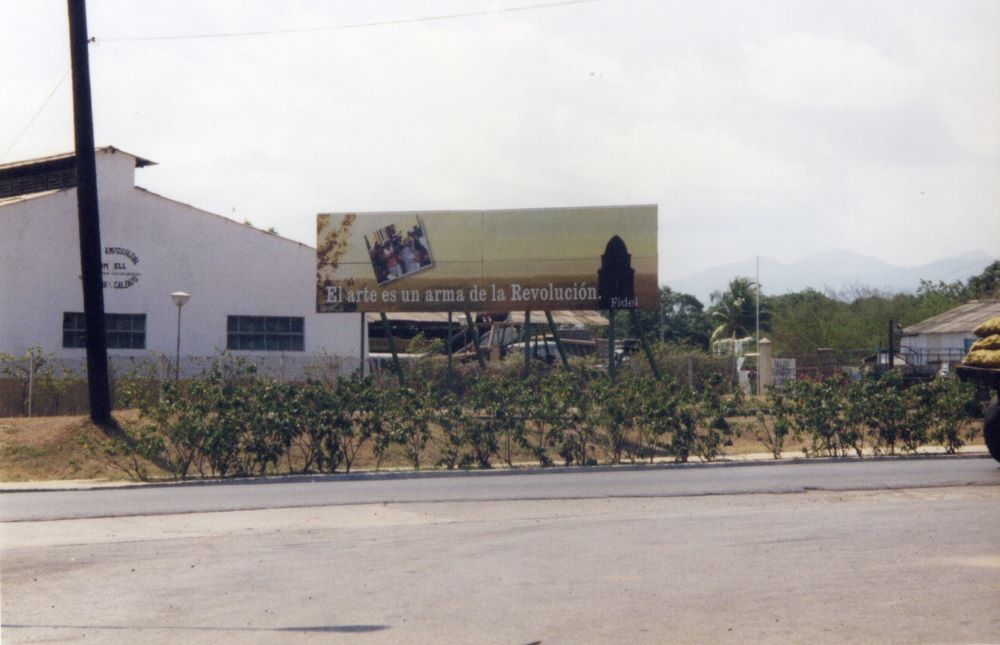First announced by Fidel Castro in 1967, what might have been a mere off-the-cuff remark in any other context quickly became a decades-long policy and slogan that demanded adherence from all artists, writers, and cultural workers. Left up to the state’s censors at the Ministry of the Revolutionary Armed Forces, top militants of the Communist Party, and diverse state agencies governing culture was exactly how the art of any kind could be a “weapon.” Experience showed this to mean ideological adherence to not only campaigns launched by the Communist Party but also images that portrayed Communism, its leaders, and its history always in a favorable, triumphant, aspirational light. Beginning in 1991, artists were allowed to make and sell their art directly to buyers without the interference of a government gallery or agent. This freedom came to a crashing halt in 2018 when the state reversed course, prompting the artist-led protests and opposition that has galvanized millions of island Cubans ever since. EL ESCAMBRAY, JUNE 2000.
As this website nears its second year of exploration and reflection on Cuba’s lessons for the world, we also witness the continuing flight of more than half a million Cubans from the island for the United States. Since 2022, Cuba’s oldest-running Communist leaders—such as Raúl Castro, Ramiro Valdés, and others—have presided over a visibly consolidated crony-capitalist state defended by a tiny political elite and a massive security apparatus. Self-serving policies and recently decreed legal mechanisms for repressing dissent also reflect great historical irony: the very dictatorship of Fulgencio Batista that these leaders once overthrew has flourished anew. Given Cuba’s permanent state of crisis and the oddly stagnant policies of the last two US administrations, this Fotodiario edition of our website looks back at the Special Period, the post-Soviet era of the 1990s and early 2000s, that plunged all islanders into a watershed crisis of surreal proportions. Gems of the Archive and Ex-Libris celebrate UF’s acquisition of the Eduardo “Guayo” Hernández Collection, an incredible testament to the democratizing role of Cuba’s once-independent journalism. We hope this edition will invoke curiosity, knowledge, analysis, and the courage to debate and consider what kind of change might benefit the most Cubans among all of our Cuban Studies’ viewers.
